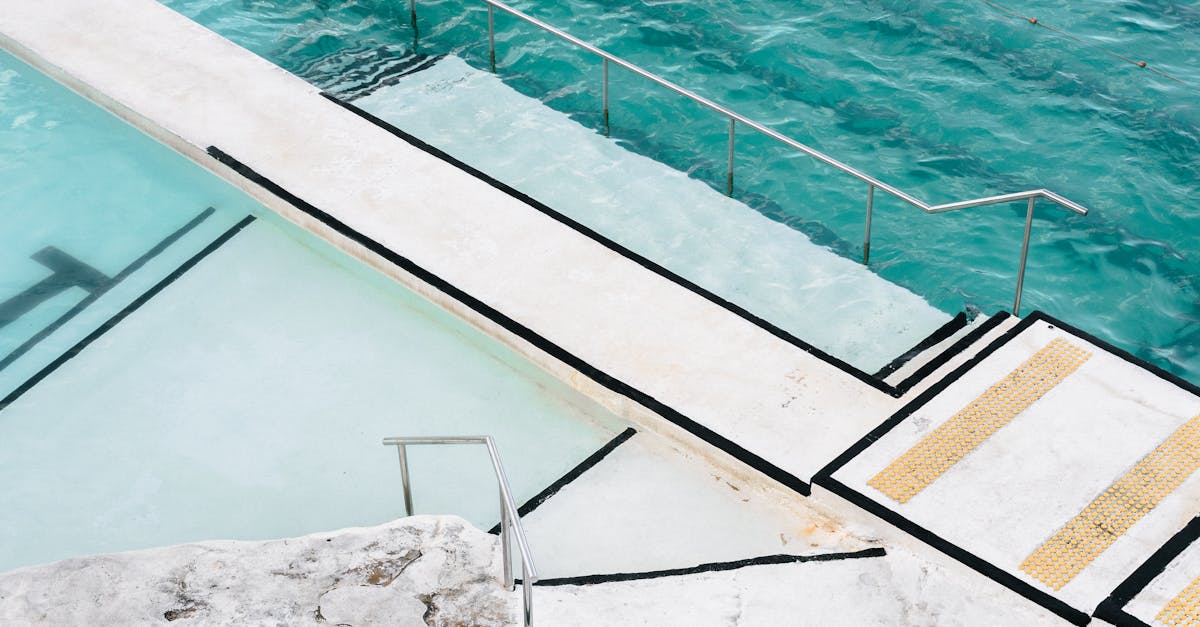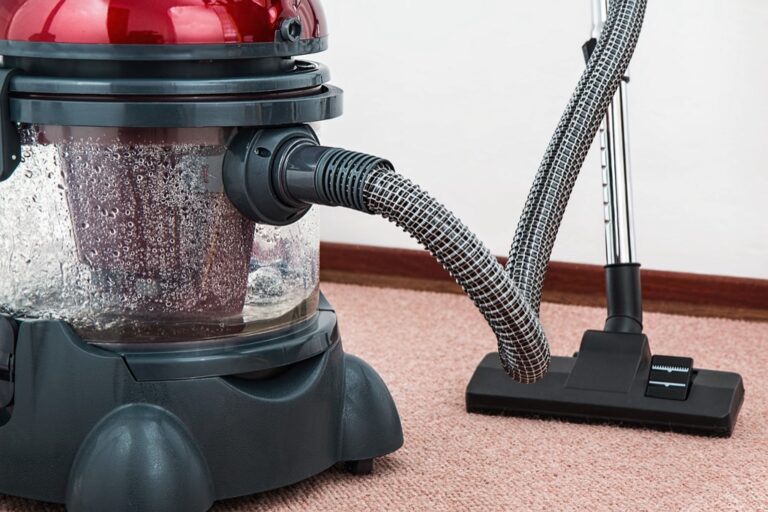7 Steps to Monitor Pool Temperature Accurately That Save Energy Costs
Discover the 7 essential steps to accurately monitor your pool temperature year-round, from choosing the right thermometer to setting up automated alerts for optimal swimming comfort and energy efficiency.
Maintaining the perfect pool temperature isn’t just about comfort—it’s essential for water chemistry balance, equipment longevity, and energy efficiency. Whether you’re a new pool owner or looking to upgrade your monitoring system, knowing how to accurately track water temperature can save you time and money while ensuring your swimming experience remains pleasant year-round.
In this guide, you’ll discover seven straightforward steps to monitor your pool temperature with precision, from selecting the right thermometer to implementing automated systems that do the work for you. These methods will help you maintain optimal conditions regardless of seasonal changes or unexpected weather patterns.
Disclosure: As an Amazon Associate, this site earns from qualifying purchases. Thank you!
1. Choosing the Right Pool Thermometer for Accurate Readings
Selecting the appropriate pool thermometer is the foundation for maintaining optimal water temperature. The right device ensures you’re making informed decisions about heating systems, chemical treatments, and swim readiness.
Digital vs. Analog Thermometers: Pros and Cons
Digital thermometers offer precision readings with accuracy to within 0.1°F and feature easy-to-read displays, even in bright sunlight. They respond quickly to temperature changes but require batteries and may fail if they get wet internally. Analog thermometers are more durable, need no power source, and work reliably for years, though they’re typically accurate only to within 1-2°F and can be harder to read.
Wireless Options for Remote Monitoring
Wireless pool thermometers connect to smartphones or home automation systems, allowing you to check water temperature from anywhere. Most models offer additional features like alerts when temperatures fall outside preset ranges, historical data tracking, and integration with smart home platforms. Premium systems can even automatically adjust heaters based on your preferred temperature settings, saving both energy and maintenance time.
Monitor your pool temperature from inside your home with this wireless thermometer, boasting a 500ft range and accurate readings. Its durable, waterproof design and large, backlit display provide easy monitoring in any conditions.
2. Determining the Optimal Placement Points for Temperature Sensors
The accuracy of your pool temperature readings depends significantly on where you place your sensors. Strategic placement ensures you’re getting consistent, reliable data that truly represents your pool’s temperature.
Surface vs. Deep Water Measurement Locations
Temperature stratification occurs naturally in swimming pools, with surface water typically warmer than deeper water. For the most accurate assessment, place sensors at mid-depth (about 18 inches below the surface) where most swimming activity occurs. If using multiple sensors, position one near the surface and another in deeper water to understand your pool’s temperature profile completely.
Avoiding Heat Sources and Cold Spots
Place sensors at least 3 feet away from pool heaters, return jets, and direct sunlight to prevent false readings. Similarly, avoid areas near pool steps, corners, or shaded spots where cold pockets commonly form. The ideal location is in a central area with good water circulation, away from skimmers and main drains that might affect temperature consistency.
3. Establishing a Consistent Monitoring Schedule
Regular temperature monitoring is essential for maintaining optimal pool conditions. Creating a schedule ensures you’ll catch temperature fluctuations before they affect water chemistry or swimmer comfort.
Daily vs. Weekly Measurement Frequencies
Daily temperature checks are ideal during peak swimming season when your pool gets frequent use. Check temperatures every morning to catch overnight fluctuations. Weekly monitoring is sufficient during off-seasons or for covered pools with stable environments. For heated pools, daily monitoring helps optimize energy usage and maintain consistent temperatures.
Best Times of Day for Temperature Checks
Early morning (6-8 AM) readings reveal your pool’s baseline temperature before sun exposure. Evening measurements (7-9 PM) show heat retention patterns after a full day of sun. For the most accurate assessment of swimming conditions, check temperatures midday (1-3 PM) when the pool typically reaches its daily peak temperature. Avoid taking readings immediately after running pool equipment.
4. Setting Up Automated Temperature Alert Systems
Smart Pool Monitoring Technology Options
Effortlessly maintain your pool or hot tub with the Crystal Smart Water Monitor. It continuously tests your water and sends customized chemical recommendations to your phone, eliminating guesswork and saving you time.
Today’s smart pool monitors offer unprecedented control over your swimming environment. Options range from simple Wi-Fi-enabled thermometers that connect to your smartphone to comprehensive systems that integrate with your home automation setup. Look for devices featuring water-resistant sensors, reliable wireless connectivity (up to 300 feet), and compatibility with popular platforms like Apple HomeKit, Google Home, or Amazon Alexa. Top systems like the Sutro Smart Monitor or pHin offer real-time temperature tracking plus additional water chemistry monitoring.
Configuring Temperature Threshold Notifications
Setting up precise temperature alerts ensures you’re instantly notified when conditions change. Start by determining your ideal temperature range (typically 78-82°F for recreational swimming). Configure your system to send alerts when readings fall outside your preset thresholds—typically 2-3°F above or below your target. Most smart systems allow you to customize notification methods including push notifications, text messages, or email alerts. For outdoor pools, consider setting seasonal adjustment schedules that automatically modify alert parameters based on weather patterns.
5. Maintaining Your Temperature Monitoring Equipment
Regular maintenance of your pool temperature monitoring equipment ensures accurate readings and extends the lifespan of your devices. Proper care prevents costly replacements and helps maintain optimal swimming conditions year-round.
Cleaning and Calibration Procedures
Clean your temperature sensors monthly by gently wiping with a soft cloth and mild solution of water and dish soap. Remove mineral deposits with a vinegar solution (1:3 ratio with water). Calibrate digital thermometers quarterly by comparing readings with a reference thermometer in ice water (32°F) and adjusting settings according to the manufacturer’s instructions.
When to Replace Temperature Sensors
Replace temperature sensors when readings become inconsistent or drift significantly from reference measurements. Most quality digital sensors last 2-3 years, while wireless models typically need replacement after 3-5 years. Watch for physical damage signs like cracked displays, corrosion on contacts, or battery compartment deterioration that can compromise accuracy and functionality.
6. Tracking and Recording Temperature Patterns
Monitoring your pool temperature over time reveals valuable patterns that can help you optimize heating schedules and identify potential issues before they become problems.
Creating an Effective Temperature Log
Start tracking your pool temperature with a dedicated log that includes date, time, and reading. Record additional factors like weather conditions, heater usage, and pool cover status alongside each measurement. Use a simple spreadsheet or notebook with columns for each variable to identify correlations between environmental changes and water temperature fluctuations.
Using Apps and Software for Data Analysis
Several pool management apps now offer temperature tracking features with visual graphs showing trends over days, weeks, and months. Apps like Pool Math and pHin automatically generate reports highlighting temperature patterns and anomalies. These digital tools can integrate with smart thermometers to eliminate manual data entry and send customized insights about heating efficiency and cost-saving opportunities directly to your smartphone.
7. Adjusting Pool Heating Systems Based on Measurements
Mastering pool temperature monitoring gives you complete control over your swimming experience. With accurate readings and established patterns you can now make informed adjustments to your heating system. When temperatures drop below your desired range activate your heater in advance rather than waiting until swim time. Use your collected data to program heating cycles that align with your swimming schedule and local weather patterns.
Remember that maintaining proper temperature isn’t just about comfort—it directly impacts water chemistry energy costs and equipment longevity. By following these seven steps you’ve created a comprehensive system that ensures your pool remains at the perfect temperature year-round. Your consistent monitoring efforts will pay off through enhanced swimming experiences fewer maintenance issues and optimized operating costs for seasons to come.
Frequently Asked Questions
What is the ideal swimming pool temperature?
The ideal swimming pool temperature is typically between 78-82°F (25.5-27.8°C) for recreational swimming. However, this may vary depending on the activity: competitive swimming benefits from cooler temperatures (77-82°F), while therapy pools are often warmer (88-92°F). Children and elderly swimmers generally prefer slightly warmer water around 84°F for comfort.
How often should I check my pool’s temperature?
During peak swimming season, check your pool temperature daily to catch overnight fluctuations. In off-seasons or for covered pools, weekly checks are sufficient. The best times for measurements are early morning (to catch the lowest temperature), evening (for safety before night swimming), and midday (to monitor heating efficiency).
Are digital thermometers better than analog ones for pools?
Get accurate and fast temperature readings with the Goodbaby Forehead Thermometer. This easy-to-use thermometer utilizes infrared technology for forehead, room, and object temperature measurements.
Digital thermometers offer more precise readings (typically within 0.1-0.2°F) and quicker response times than analog versions. While they require batteries, their accuracy makes them preferable for most pool owners. Analog thermometers are more durable and don’t need power, but they’re generally less accurate, with readings that may be off by 1-2°F.
Where should I place my pool temperature sensor?
Place your temperature sensor at mid-depth (about 18 inches below the surface) for the most reliable readings. Avoid areas near heat sources, cold spots, or locations with poor water circulation. A central pool location provides the most consistent temperature assessment for your entire swimming area.
Can I monitor my pool temperature remotely?
Yes, wireless pool thermometers connect to smartphones or home automation systems, allowing you to check water temperature from anywhere. These systems can also be configured to send alerts when temperatures fall outside your desired range and can even automate heating adjustments based on your preferred settings.
How long do pool temperature sensors typically last?
Quality digital pool temperature sensors typically last 2-3 years, while wireless models may function effectively for 3-5 years. Regular maintenance can extend their lifespan. Replace sensors if you notice inconsistent readings, physical damage, corrosion, or failure to maintain wireless connections—all signs that accuracy may be compromised.
How do I maintain my pool temperature monitoring equipment?
Clean sensors monthly by wiping them with a soft cloth and mild solution to remove buildup. Calibrate digital thermometers quarterly using ice water tests or manufacturer instructions. Store portable units properly when not in use, keeping them away from extreme temperatures and direct sunlight to maintain accuracy and extend their lifespan.
Is it worth investing in automated temperature monitoring systems?
Yes, automated temperature monitoring systems are worthwhile investments, especially for heated pools. They provide continuous monitoring, alert you to issues before they become problems, allow remote adjustments, and can significantly improve energy efficiency by optimizing heater operation, potentially saving hundreds of dollars annually in heating costs.
How do temperature records help with pool maintenance?
Temperature records help identify patterns and potential issues before they become serious problems. By tracking readings over time, you can optimize heating schedules, detect equipment malfunctions early, understand seasonal variations, and make data-driven decisions about pool covers and heating systems—ultimately improving efficiency and reducing operating costs.
Does pool temperature affect chemical balance?
Yes, pool temperature significantly affects chemical balance. Warmer water (above 85°F) accelerates chlorine dissipation and can promote algae growth. Higher temperatures also increase the likelihood of scaling and can affect pH stability. Maintaining consistent temperature helps stabilize chemical levels and reduces the amount of chemicals needed overall.









